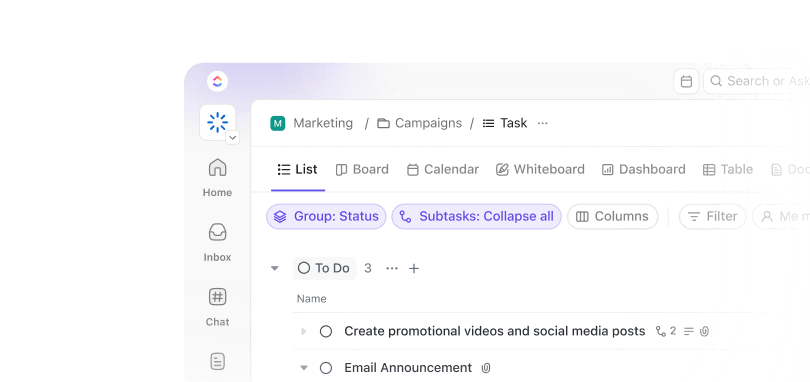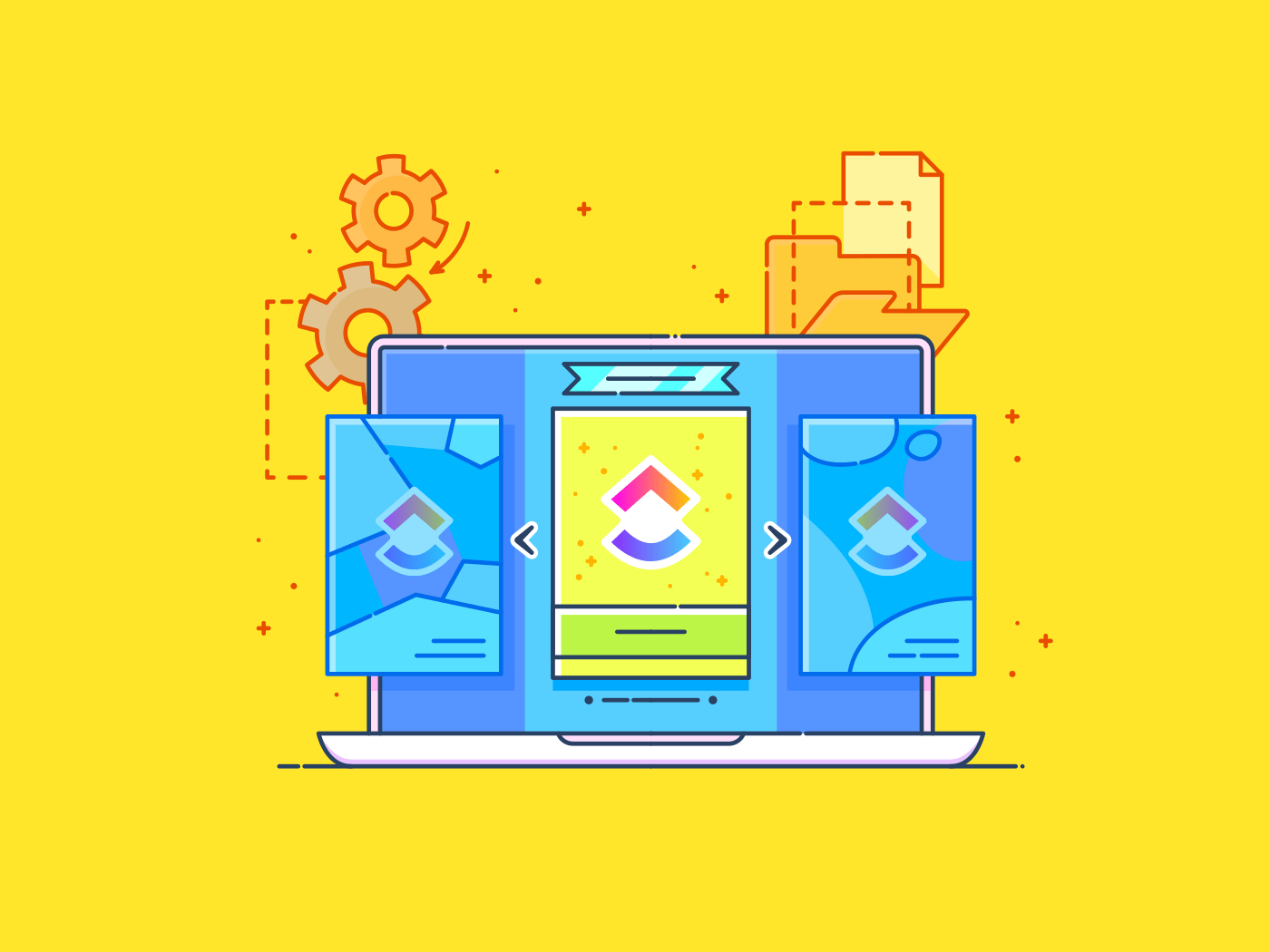You can’t grow without new leads.
Chasing unresponsive contacts, tracking follow-ups, and hitting weekly targets often turns prospecting into a high-effort, low-yield grind.
The real issue? Most prospecting is reactive and based on volume instead of intent. And without a clear system, it’s easy to burn hours on leads that were never a fit.
In this guide, we’ll explore proven strategies, time-saving tools, and practical tips for building a more consistent, efficient pipeline.
Client Prospecting: Strategies, Tools, and Tips to Win More Leads
What Is Client Prospecting and Why Is It Important?
Client prospecting involves identifying potential clients who are likely to be interested in your product or service and contacting them through methods like cold calling, email campaigns, social media, or networking. The goal is to qualify these prospective clients as leads and move them through the sales funnel.
Here’s what strategic client prospecting can do for you:
- Fuel your sales funnel: Keeps your pipeline full, ensuring a steady flow of leads and avoiding dry spells with limited opportunities
- Drive revenue growth: Increases the likelihood of converting high-quality, targeted prospects you engage with into paying customers
- Build brand awareness: Puts your brand in front of new audiences even if a prospect doesn’t immediately convert. Continual visibility via sales prospecting can lead to word-of-mouth referrals, repeat engagements, or future conversions
- Reduce the dependency on inbound leads: Gives you control to target potential clients and reduce reliance on inbound leads proactively
- Strengthen sales skills: Helps your sales teams improve key skills such as negotiation, active listening, and persuasion, while helping you master objection handling, expectation management, and trust-building with prospects
🤝🏻 Friendly Reminder: Client prospecting is not always about getting a ‘yes’ immediately. Tracking micro-conversions like opens, replies, or booked meetings helps identify engaged prospects and prioritize follow-ups effectively.
Difference Between Prospecting and Lead Generation
While closely related, prospecting and lead generation serve different purposes in the sales process.
Lead generation is a marketing-driven activity focused on attracting potential buyers. It is often done through content, ads, SEO, or events to build a list of interested contacts.
Prospecting, on the other hand, is a sales-driven activity focused on researching, qualifying, and engaging leads to start meaningful conversations and guide them through the sales pipeline.
In short,
Lead generation = Attract
Prospecting = Engage and qualify
Here’s a quick overview of the differences between prospecting and lead generation:
| Aspect | Lead generation | Prospecting |
| Goal | Attract potential buyers | Identify and contact high-quality, valuable leads |
| Approach | Inbound or automated outbound | Manual and targeted outbound |
| Ownership | Marketing teams | Sales teams |
| Scale | Broad, mass reach | Narrow and personalized outreach |
| Tools | Ads, landing pages, and other marketing collateral | CRMs, LinkedIn, email outreach, cold calls |
| Lead quality | Typically unqualified; needs further vetting | Pre-qualified based on fit, intent, and engagement |
| Personalization | Low to medium | Highly tailored messaging based on research |
| Outcome | Captures contact details for nurturing | Books meetings and opens sales conversations |
Types of Prospecting
1. Cold calling
You reach out to prospects over a phone call without prior interaction. It’s high effort and high reward when done right.
Example: A sales rep at a digital agency calls mid-sized eCommerce brands offering a free audit of their ad creatives.
How to do it well:
- Start with a problem the prospect likely faces (e.g., ‘Not happy with your ROAS?’)
- Keep it focused on value, not features
- Aim to book a follow-up, not pitch everything upfront
🧠 Remember: A warm tone and real curiosity often outperform a perfect script. It’s not about selling on the spot; it’s about earning the next conversation.
2. Cold emailing
Less disruptive and more scalable, this method is great for freelancers and agency teams looking to build relationships at scale.
Example: A freelance copywriter sends personalized emails to SaaS startups with subject-line tweaks to boost open rates.
How to do it well:
- Personalize your message by mentioning their site, campaign, or recent launch
- Offer a clear, valuable idea that shows you’ve put thought into their business
- End with a no-pressure CTA like ‘Want me to send over a quick sample headline you could test?’
🧠 Remember: Understand your prospect’s pain points and craft personalized, solution-driven emails that spark interest.
3. Social selling
This refers to building trust on LinkedIn, Instagram, or Twitter before reaching out directly.
Example: A performance marketer posts campaign teardown tips on LinkedIn and invites engagement. When a prospect comments, they follow up with a personalized message offering a free 15-minute consultation.
How to do it well:
- Post consistently with actionable content
- Comment on your prospects’ posts with helpful content
- Move to DMs only when there’s real interest or context
🧠 Remember: Provide value in public before you pitch in private. Build a personal relationship by offering valuable guides or free support.
4. Networking events
Webinars, workshops, and meetups are goldmines for relationship-first prospecting.
Example: A sales consultant attends a virtual GTM workshop and connects with RevOps leads who express interest in refining their sales playbook.
How to do it well:
- Ask insightful questions, listen actively, and offer valuable tips instead of just pitching
- Note key takeaways from your conversations to craft highly personalized follow-ups
- Prioritize quality over quantity by targeting attendees who align with your ideal customer profile
🧠 Remember: Send a thoughtful message within 24 hours, referencing something specific from your chat. It shows you listened and care.
5. Database mining
For sales teams and agencies equipped with CRM systems or sales prospecting tools like or LinkedIn Sales Navigator, database mining offers a highly targeted approach to prospecting.
How to do it well:
- Leverage data on job changes, funding news, or tech stack shifts to find leads in a growth phase
- Align your messaging with the prospect’s recent milestone or business need
- Monitor responses, and re-target unresponsive but qualified leads with a different approach or additional value
🧠 Remember: Use recent triggers like job changes, funding, or product launches to add context and make your outreach timely and relevant.
The Client Prospecting Workflow
A well-mapped out client prospecting workflow can maximize your sales potential. Including the right tools can help you streamline and automate each step of your sales prospecting process and help your teams stay on track.
Here’s how to build a seamless and repeatable workflow for client prospecting.
Step 1: Define your Ideal Client Profile (ICP)
Before you start prospecting, pause and ask: Who exactly are we trying to sell to?
An ICP describes companies or individuals most likely to benefit from your product and convert. Without this, your outreach will be scattered, filling your pipeline with poor-fit leads.
A strong ICP includes:
- Industry and company size
- Common pain points and business goals
- Roles involved in the buying decision
- Triggers that indicate readiness to buy (e.g., hiring, tool migration)
Once defined, your ICP should be easy for sales development representatives (SDRs), account executives (AEs), and marketers to access and reference.
With , you can turn your ICPs into living, collaborative documents.
- Use Docs to build rich, collaborative ICP profiles. Structure them with sections for industry traits, pain points, goals, and trigger events
- Doc tags like ‘mid-market’ or ‘technical buyer’ make filtering fast and efficient

- Use Relationships to link each ICP to relevant objections, case studies, or outreach templates


🚀 Optimization Tip: Use Doc Relationships to create a connected ecosystem. For example, your ‘E-commerce ICP’ doc can link to:
- Common objections → A doc listing frequent pushbacks from e-commerce prospects and how to handle them
- Case studies → Real success stories from similar clients you can reference during outreach
- Persona-specific collateral → Sales decks, messaging frameworks, or email templates tailored for marketing managers or founders in e-commerce
Step 2: Build a prospect list
Now that you know your ideal customer profile, it’s time to find real prospects who match it.
But building a quality prospect list requires capturing meaningful context. A high-quality list should include:
- Contact details (email, phone, LinkedIn)
- Company data (industry, size, revenue)
- Lead source and campaign attribution
- Fit signals like ICP match or intent data
This is where many teams hit a wall, managing disconnected spreadsheets, digging through tools, or importing outdated CSVs. You need a centralized, flexible system where you can segment, score, and act on your leads.
With CRM, you can easily organize leads and move them through your pipeline.
- Import your prospect list into CRM pipelines and segment using Custom Fields like company size, source, and estimated deal value
- Use Forms to capture inbound leads and instantly trigger automations that assign tasks, set stages, and alert reps.
- Keep communication seamless with the Email ClickApp, which lets you send and receive emails directly within —keeping every conversation tied to the right task for complete visibility and context
- Visualize your pipeline in real time using 15+ Custom Views. Switch between Kanban for drag-and-drop stage tracking or Table View for a spreadsheet-style overview of all your leads.


Aside from all of this, you can also use Automations to automate CRM workflow tasks:
- Set automatic reminders for follow-ups
- Trigger notifications when a deal progresses
- Assign owners when a lead comes in
🎥 Learn how combining CRM and project management can streamline workflows and improve team collaboration. Watch this video to see how it works.
💡Pro Tip: Instead of starting from scratch, use a ready-to-use structure tailored to sales processes. This will allow you to begin managing your leads immediately. Here are some CRM templates with pre-built fields, stages, and task statuses, saving you time on setup.
📮 Insight: 83% of knowledge workers rely primarily on email and chat for team communication.
However, nearly 60% of their workday is lost switching between these tools and searching for information. With an everything app for work like , your project management, messaging, emails, and chats all converge in one place! It’s time to centralize and energize.
Step 3: Outreach & follow-up
ICP. ✔️
Prospect list. ✔️
Now, outreach is where prospecting starts to generate real pipeline opportunities. But it only works if it’s consistent, timely, and personalized.
You don’t need a massive SDR team to get this right. You need a repeatable system that lets you:
- Personalize your messaging based on the ICP
- Track where each lead is in the sequence
- Automate follow-ups without losing the human touch
For example, you can create Tasks for each lead or campaign and structure them with subtasks, checklists, due dates, and Custom Fields like Last Contacted or Response Status. Assign task owners, set dependencies to control outreach flow, and save entire sequences as reusable task templates—like “Cold Outreach—eComm Leads Q2”—to keep things scalable.
Automations can then handle the heavy lifting: trigger follow-up reminders three days after the last step, update a prospect’s status when a field changes, or notify your team when a hot lead replies. With Custom Fields tracking responses (Yes, No, No Response), you can also easily segment and analyze outreach performance at a glance.
💡Pro Tip: Craft tailored outreach messages by inputting details like target audience, product features, and desired tone with Brain.


Step 4: Qualify and convert
Not every lead is ready to buy, and that’s fine. The goal is to identify high-quality leads worth nurturing and fast-track them through your pipeline.
Use frameworks like BANT and MEDDIC within ’s task management system. For example, create Custom Fields for budget or authority to filter and prioritize leads based on specific criteria.
This is also where tight collaboration between SDRs and AEs becomes essential.
for Sales supports deal qualification and collaboration by offering a flexible and centralized workspace for your sales team to track, score, and collaborate.
- Use Custom Fields to map each element of a framework like BANT into your workflow. For instance, for budgets, you can use a dropdown or number field with example values like $0-$5K, $5K-$20k, and so on. For authority, you can use a dropdown field type with values like ‘decision maker’, ‘influencer’, ‘gatekeeper’, etc
- Centralize call notes, objections, documents, and contracts inside each lead’s task
- Use Task Checklists and Subtasks for clean SDR → AE handoffs
also enables real-time tracking of deal metrics like total value, expected close amount, and cost-to-acquire using column calculations and Dashboards.
| Tool name | Features | Best for |
| Task management, custom fields, automations, dashboards, CRM-style pipelines | Organizing, assigning, and tracking every step of the prospecting process | |
| ZoomInfo | Company data, contact enrichment, and intent signals | Finding accurate, up-to-date contact information and company insights |
| Hunter.io | Email finder, email verification, Chrome extension | Finding and verifying email addresses for accurate outreach |
| LinkedIn Sales Navigator | Advanced search filters, lead recommendations, and CRM integration | Discovering and engaging with prospects based on job role or growth signals |
| Dealfront | Company tracking, intent data, and website visitor identification | Identifying and targeting high-quality prospects using real-time signals |
| Cognism | GDPR-compliant B2B data, AI-powered enrichment, intent filters | AI-powered B2B lead generation with enriched contact data |
| Zapier | App integrations, automated workflows, lead routing | Automating lead management and connecting your sales tools seamlessly |
Metrics to Track Prospecting Success
So you’ve put together a detailed prospecting workflow, and it’s in motion. Now, the question is, how well is it working? Is it generating quality leads? Are they moving through the sales funnel?
To measure the effectiveness of your prospecting efforts, track metrics like lead volume, engagement rates, and conversion rates, and integrate these into ’s Dashboards for visual insights.
- Lead volume: Number of leads successfully identified through various outreach methods within a specific period
- Lead response time: Time taken by your team to respond to a new lead
- Engagement rate: Percentage of leads that have engaged with your outreach efforts
- Conversion rate: Percentage of leads moving from one stage of the funnel to the next
- Lead qualification rate: Percentage of leads that match your ICP or qualify based on criteria like BANT
- Opportunity win rate: Deals successfully closed and converted into sales after being identified as opportunities.
- Follow-up rate: Number of follow-ups needed to convert a lead, showing how much effort is required to keep prospects engaged.
- Pipeline velocity: Speed at which leads move through your sales pipeline, indicating how efficient your prospecting and conversion processes are. This is also a sales pipeline metric that helps forecast revenue and identify bottlenecks slowing down deal progression
- Cost per lead: Cost associated with acquiring each lead, helping you understand whether your prospecting efforts are cost-effective
However, simply tracking these metrics is not enough. You need to map out this data to identify recurring patterns or trends in the data and optimize your client prospecting process.
Dashboards offer a comprehensive and customizable way to visualize your metrics and identify trends and improvement areas.
Create visual reports with pie charts, bar graphs, and other widgets to track key metrics and gain quick insights into your team’s performance.
Filter by date ranges, lead sources, or sales stages to explore the data more deeply. Track and compare performance across different segments to optimize your prospecting strategy.
Challenges in Client Prospecting and How to Overcome Them
Many sales teams struggle to find the right prospects, engage them meaningfully, and move them through the funnel consistently.
Here’s a breakdown of some of the most common challenges in client prospecting and actionable ways to tackle them.
1. Identifying the right prospects
Spending time on unqualified leads drains your team’s energy and slows the pipeline. Misaligned prospects result in lower conversion rates and longer sales cycles.
Solution:
- Build detailed ICPs based on past successes and existing clients
- Segment and score leads in with Custom Fields using frameworks like BANT or firmographics
- Use customer journey templates to understand where each prospect is in the buying cycle
2. Ineffective outreach methods
Cold emails and generic messages are often ignored. When outreach lacks personalization or value, even the right prospects lose interest.
Solution:
- Always think about what’s in it for your clients. During your sales outreach, offer valuable insights, free guides, samples, and other incentives
- Personalize outreach using data and automation tools from your sales tech stack. Generate personalized email drafts based on lead details, tone, and campaign goals
- Standardize your sales pitch and follow-up using sales plan templates tailored to different personas or industries
3. Lack of a structured sales approach
An ineffective sales process results in lost opportunities since essential steps are missed and prospecting becomes inconsistent. Unclear workflows can also negatively impact your sales team’s productivity by reducing the time spent selling.
Solution:
- In a visual sales process flowchart, map each step from lead generation to closing
- Automate routine tasks like lead qualification, email outreach, and data entry
- Implement dashboards and tracking tools through sales project management platforms. Monitor real-time performance metrics like follow-up rate, conversion rate, and pipeline velocity
Stop Chasing Leads & Start Closing Them With
When done right, client prospecting drives business growth through a steady pipeline of potential customers. It expands your reach and creates revenue opportunities.
However, most businesses struggle because client prospecting requires consistent effort and a strategic approach, and many fall short in both areas.
The bottom line? The best prospecting strategies aren’t about doing more; they’re about doing better. That means focusing on high-intent leads, personalizing your outreach, and using tools like to track touchpoints, automate follow-ups, and keep your pipeline moving.
So sign up on today and start building a more scalable prospecting engine!


Everything you need to stay organized and get work done.












